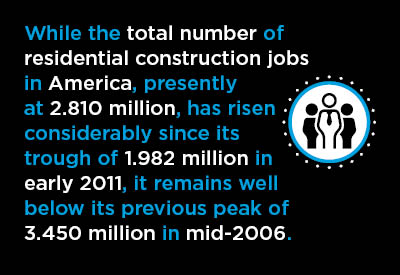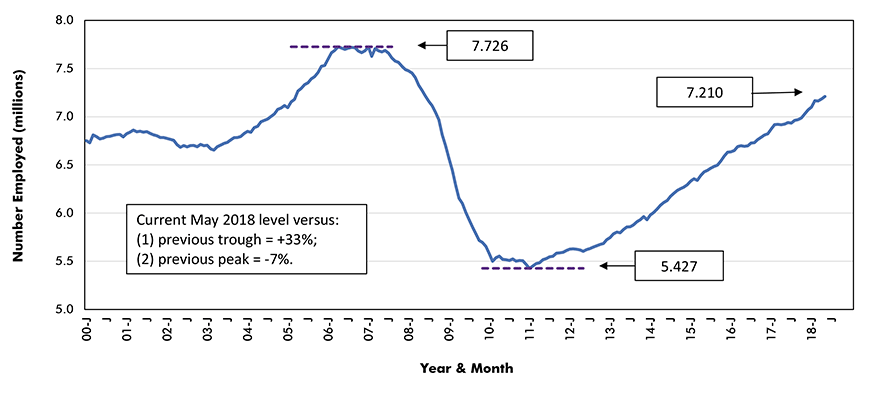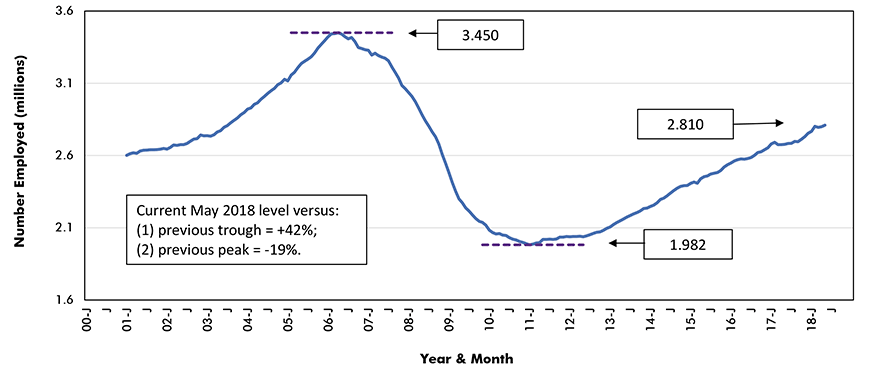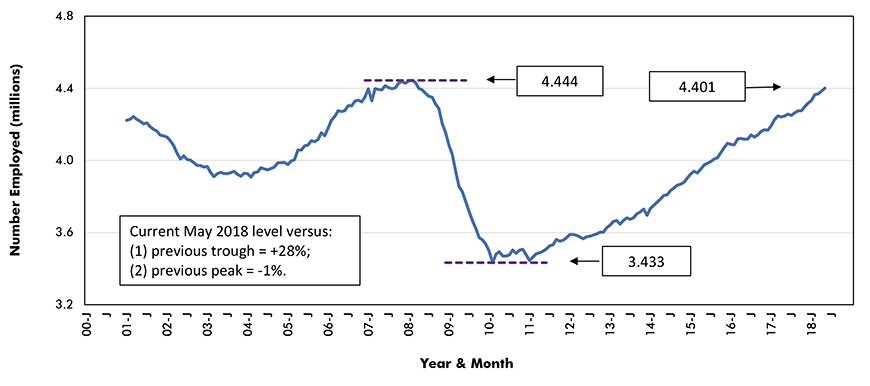Table B-1 in the monthly Employment Situation report issued by the Bureau of Labor Statistics (BLS) records the total number of jobs in U.S. construction according to three major sub-categories: (1) construction of buildings; (2) heavy and civil engineering construction; and (3) specialty trade contractors (i.e., the ‘sub-trades’).

In turn, ‘construction of buildings’ is separated into ‘residential building’ and ‘nonresidential building’, while the ‘specialty trade contractors’ number is further divided into ‘residential’ and ‘nonresidential’.
By summing up the appropriate sub-categories, total construction jobs can be split into ‘residential’ versus ‘nonresidential’. The results are shown in Graphs 1, 2 and 3.
By the way, the numbers in Table B-1 are derived from the Current Employment Survey (CES) conducted by the BLS. CES depends on responses from employers. The type-of-work designations are establishment-based.
Therefore, the construction figures in B-1 include not only on-site or field workers with general contractors and the sub-trades, but also executives, support staff and other related personnel, such as estimators.
Graphs 2 and 3 highlight an interesting dichotomy.
While the total number of residential construction jobs in America, presently at 2.810 million, has risen considerably since its trough of 1.982 million in early 2011, it remains well below its previous peak of 3.450 million in mid-2006.
For residential construction jobs, the recovery has been +42%, but the remaining shortfall is -19%.
By way of contrast, nonresidential construction jobs, now at 4.401 million have rebounded almost all the way from their trough of 3.433 million in 2010-2011 to nearly match their early-2008 prior peak of 4.444 million.
For nonresidential construction jobs, the pick-up has been +28%. The gap that is left is only -1%.
There’s another way to emphasize the discrepancy. With respect to their peak-to-trough declines, the restoration in the jobs count has been 96% for non-residential work but only 56% for residential.
It’s important to note that the peak-to-trough decline during the Great Recession was far more severe for residential construction employment than for nonresidential, -43% compared with -23% respectively.
Residential construction activity is almost entirely driven by private sector initiatives. Housing starts nose-dived by 80% due to the sub-prime mortgage fiasco and the associated financial crisis.
There’s always a significant amount of nonresidential construction activity, however, − e.g., schools, transit projects, roadways and sewers and watermains − that has public sector backing.
Even in the worst of economic times, there’s a ‘floor’ level of capital spending by the public sector that provides a measure of support for non-residential construction.
In summary, the fact that total U.S. construction employment, as illustrated in Graph 1, has still not come all the back is almost entirely due to a weaker-than-hoped-for performance of residential construction jobs.

Chart: ConstructConnect.

Chart: ConstructConnect.

Chart: ConstructConnect.











Recent Comments
comments for this post are closed